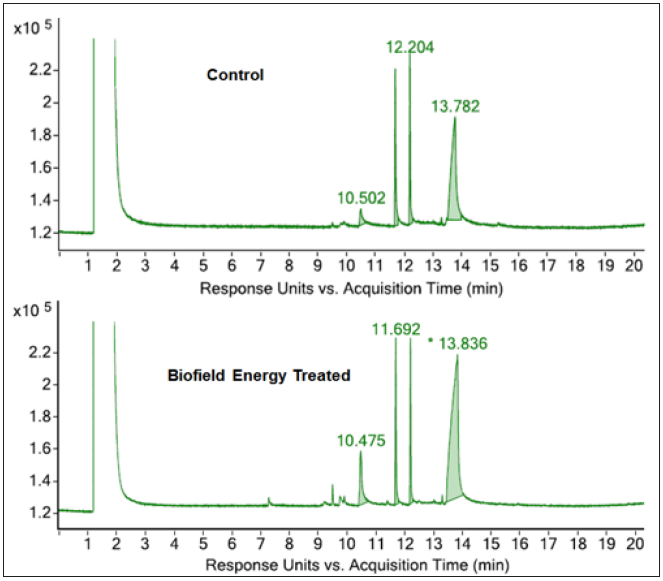Evaluation of the Structural Properties and Isotopic Abundance Ratios of Consciousness Energy Treated Pyridoxine Using LC-MS, GCMS, and NMR Spectroscopy by Snehasis Jana* in Advances in Complementary & Alternative medicine_ journal of alternative medicine research

Abstract
Pyridoxine
(vitamin B6) is an essential water-soluble vitamin widely used in
nutraceutical and pharmaceutical formulations for the prevention and treatment
of vitamin B6 deficiency and other diseases. The objective of the study was to
explore the impact of the Trivedi Effect®-Consciousness Energy Treatment on the
isotopic abundance ratios and structural properties of pyridoxine hydrochloride
using LC-MS, GC-MS, and NMR analytical techniques. The pyridoxine sample was
equally divided into control/ untreated and Biofield Energy Treated pyridoxine.
The treated pyridoxine sample received Biofield Energy Treatment (the Trivedi
Effect®) remotely for ~3 minutes by Mr. Mahendra Kumar Trivedi, who was located
in the USA, while the test samples were located in the research laboratory in
India. The treated sample was designated as the Biofield Energy Treated sample.
The LC-ESI-MS analysis of both of the pyridoxine samples showed the protonated
parent ion mass at m/z 170 (calcd for C8H12NO3+, 170.08) at retention times
(Rt) 2.41 minutes. But, the relative peak intensities of the treated pyridoxine
were significantly improved compared to the control sample. The isotopic
abundance ratios of PM+1/PM (2H/1H or 13C/12C or 15N/14N or 17O/16O) and
PM+2/PM (18O/16O) were significantly increased by 11.92% and 153.85%,
respectively in the treated pyridoxine compared to the control sample. Thus,
2H, 13C, 2H, 15N, 17O contributions from C8H12NO3+ to the isotopic m/z 171 and
18O contribution to the isotopic m/z 172 was significantly increased in the
treated sample compared with the control sample. The GC chromatographic peak
area% and GC-MS mass peak intensity of the treated sample was significantly
increased by 15.88% and 32.26%, respectively compared to the control sample.
The proton and carbon signals for CH3, CH2, NH2, CH, =C=, and C-OH groups in
the 1H and 13C NMR spectra of the control and treated samples were similar. The
increased mass peak intensities, peak area%, and isotopic abundance ratios in
the Biofield Energy Treated pyridoxine might be the impact of the Trivedi
Effect®-Consciousness Energy Treatment via the possible mediation of neutrinos,
which further lead to the change in the kinetic isotope effects of the treated
pyridoxine. Thus, the Trivedi Effect® Treated pyridoxine might be advantageous
for designing better nutraceutical, dietary supplements and/or pharmaceutical
formulations which might provide better therapeutic response against vitamin B6
deficiency, hereditary sideroblastic anemia, premenstrual syndrome,
cardiovascular disease, pyridoxine-dependency seizures, febrile seizures,
pulmonary tuberculosis, metabolic disorders, Alzheimer’s disease, cancer,
hyperhomocysteinemia, anxiety, asthma, depression, attention deficit
hyperactivity disorder, dysmenorrhea, akathisia, angioplasty, birth outcomes,
cognitive function, hyperkinetic cerebral dysfunction syndrome, carpal tunnel
syndrome, hypertension, immune system function, breast pain, pregnancy-induced
nausea and vomiting, lactation suppression, McArdle’s disease, osteoporosis,
Tardive dyskinesia, autism, stroke recurrence, etc
https://crimsonpublishers.com/acam/fulltext/ACAM.000629.php
Crimson
Publishers: https://crimsonpublishers.com/
For
more articles in journal of alternative
medicine research,
Please
click on below link: https://crimsonpublishers.com/acam/



No comments:
Post a Comment